Air compressors are versatile tools that empower a wide range of tasks, from inflating tires and sports equipment to powering pneumatic tools for DIY projects, construction work, and automotive repairs. Before you can tap into this compressed power source, you need to understand how to start an air compressor safely and efficiently. This guide will walk you through the fundamental steps, safety considerations, and helpful tips for operating your air compressor like a pro.
Table of Contents
Understanding Your Air Compressor
Not all air compressors are created equal. Before initiating the startup process, familiarize yourself with these key elements of your particular model:
- Power Source: Most air compressors are electric, requiring a standard grounded outlet that matches their voltage specifications. Some larger models may be gasoline-powered.
- Oil vs. Oil-Free: Oil-lubricated compressors tend to be quieter and more durable, but require regular oil level checks and changes. Oil-free compressors are more portable and require less maintenance.
- Tank Size: The tank stores compressed air. A larger tank means longer operation time before the compressor needs to cycle again.
- Pressure Regulator: This knob allows you to adjust the output pressure to match the requirements of your tools.
Preparing for Startup
- Read the Manual: Your air compressor’s manual is the ultimate authority on its specific features and safety instructions. Take the time to understand its recommendations.
- Inspection: Before each use, visually inspect your compressor for any signs of damage, leaks, or loose connections. Check the oil level if applicable.
- Placement and Ventilation: Position your compressor on a flat, stable surface in a well-ventilated area. This ensures proper airflow for cooling and helps prevent the intake of dust or debris.
How To Start An Air Compressor: Step-by-Step Guide
Following is a step by step guide to how to start an air compressor:
-
Power Connection:
Ensure your outlet is properly grounded. If possible, plug the compressor directly into the outlet, avoiding the use of extension cords. If an extension cord is necessary, choose a heavy-duty cable rated for the compressor’s amperage.
-
Drain Valve:
Open the drain valve, typically located at the bottom of the tank, for a few seconds to release any accumulated condensation. Close the valve securely to prevent leaks.
-
Pressure Switch:
Locate the pressure switch and confirm it’s in the “off” position.
-
Regulator Relief:
Turn the regulator knob counterclockwise to its lowest pressure setting. This minimizes the load during startup.
-
Power On:
Flip the compressor’s power switch to the “on” position.
-
Tank Pressurization:
The compressor will begin to run, and you’ll hear the sound of the motor and air filling the tank. Allow it to continue until the tank reaches its maximum pressure, indicated by a drop in noise as the motor automatically shuts off.
-
Set Working Pressure:
Adjust the regulator knob clockwise to increase pressure until you reach the desired setting for your tool or application.
Safe and Efficient Operation
- Safety Gear: Always wear safety glasses and ear protection when operating your air compressor.
- Hose Management: Be mindful of the hose. Avoid creating tripping hazards, and never leave it under pressure when not in use.
- Regulate Pressure: Match the regulator setting to your tool’s requirements. Excessive pressure can damage tools and cause safety hazards.
- Drain Regularly: Moisture buildup in the tank can cause rust and tank failure. Drain the tank frequently, especially in humid environments.
- Release Stored Pressure: After each use, turn off the compressor, relieve pressure through the regulator, open the drain valve, and disconnect hoses.
Troubleshooting Tips
- Compressor Won’t Start: Check the power source, fuses or breakers, pressure switch, and outlet for proper function.
- Compressor Runs Continuously: This might indicate an air leak in the tank, hoses, or connections. It could also be a sign of a faulty pressure switch.
- Excessive Noise or Vibration: Unusual sounds or movements can signal worn parts or loose fasteners. Turn off the compressor and investigate potential issues.
- Low Pressure: Check for leaks, ensure the regulator is properly adjusted, and confirm that your air tools are not exceeding the compressor’s capacity
Advanced Tips for Optimal Performance
Following are some advanced tips to use for optimal performance of your air compressor:
- Match Tools to Compressor Capacity: Every pneumatic tool has specific air consumption requirements, often measured in CFM (cubic feet per minute). Choose a compressor with a CFM rating that exceeds the combined requirements of the tools you’ll use. This ensures consistent pressure and prevents the compressor from cycling too frequently.
- Pressure Drop: Long air hoses and restrictive fittings can cause pressure loss. To compensate for this, set the regulator slightly higher at the compressor itself. Consider upgrading to larger diameter hoses for demanding tools.
- Cold-Weather Starts: In cold temperatures, condensation can freeze inside the compressor. To mitigate this, open the drain valve slightly for a few minutes as the compressor builds initial pressure, allowing moisture to escape.
- Air Filters: If you’re working in a dusty environment or require clean air for painting applications, consider installing an air filter on the compressor’s inlet.
Regular Maintenance for Longevity
- Oil Changes (If Applicable): Follow your compressor’s recommended oil change intervals. Use the compressor oil specified in your owner’s manual.
- Air Filter Cleaning: Clean the air filter regularly to prevent restricted airflow and maintain the compressor’s efficiency. Replace the filter as needed.
- Tank Inspection: Periodically inspect the tank for signs of corrosion, both internally and externally. Severe rust damage could compromise tank integrity.
Uses Of Air Compressor
Air compressors can handle a wide range of tasks. Here are a few common uses:
- Inflation: From tires to sports balls, air compressors make inflation quick and easy.
- Cleaning: Use your compressor to blow away dust, debris, or leaves from work areas and equipment.
- Painting and Finishing: Air compressors power spray guns and sanders for smooth, professional results.
- Pneumatic Tools: Nail guns, impact wrenches, staplers, and many other tools are powered by compressed air.
When to Consult a Professional
While starting an air compressor is generally straightforward, there are certain situations where it’s best to call in a qualified technician:
- Major Repairs: If your compressor exhibits signs of internal malfunctions, such as excessive oil consumption, low pressure output, or unusual noises, seek professional repair.
- Electrical Issues: Never attempt to fix electrical problems yourself. Consult an electrician if you suspect wiring issues or blown fuses.
- Tank Integrity: Should you notice significant rust, leaks, or dents in your compressor tank, have it professionally assessed. Never operate a compromised tank, as they can fail catastrophically.
Conlusion: The Power in Your Hands
By following these guidelines and prioritizing safety, you’ll master the process of how to start an air compressor and harness the power of compressed air. With a little practice and regular maintenance, your air compressor will become a reliable and essential tool for a wide variety of projects.
FAQs
Q 1: Why is it important to drain the air compressor tank?
Answer: Water condensation naturally builds up inside the air compressor tank. Failing to drain this moisture regularly can lead to internal rust, which can weaken the tank and potentially cause a dangerous failure. Draining the tank also removes any accumulated debris that may have entered the system.
Q 2: Can I use an extension cord with my air compressor?
Answer: While it’s technically possible, it’s strongly discouraged. Extension cords reduce the voltage available to the compressor, potentially leading to starting problems and increased wear on the motor. If you absolutely must use an extension cord, choose a heavy-duty cable with a gauge suitable for the compressor’s amperage rating.
Q 3: My compressor won’t shut off. What should I do?
Answer: A compressor that runs continuously usually signals a problem. First, check for any air leaks in the tank, hoses, or fittings. If no leaks are found, the pressure switch may be faulty. In this case, turn off the compressor and have a qualified technician inspect and replace the pressure switch if necessary.
Q 4: Do I need to wear safety gear when using an air compressor?
Answer: Yes! Always wear safety glasses to protect your eyes from potential debris and ear protection to reduce hearing damage from the compressor’s noise.
Q 5: How often should I change the oil in my air compressor?
Answer: This depends on your compressor model and usage frequency. Refer to the manufacturer’s manual for specific oil change recommendations. For average home use, changing the oil every 50-100 hours of operation or at least once a year is a good rule of thumb.


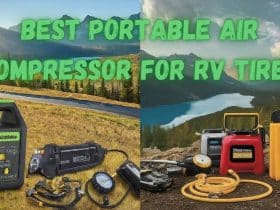
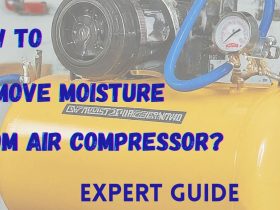
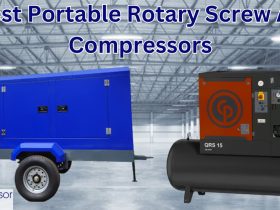

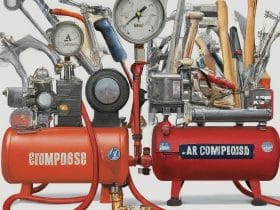
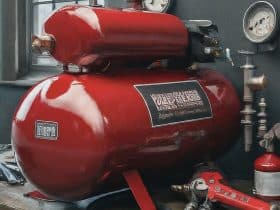
Leave a Reply